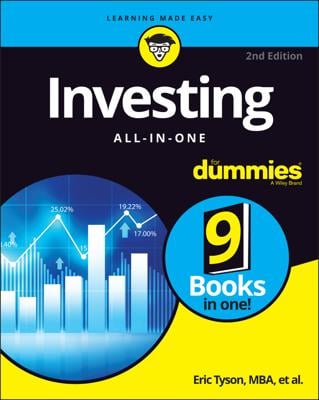In investing, liquidity refers to how quickly you can convert a particular asset into cash. If you know the liquidity of your assets, including investments, you have some options when you need cash.
All too often, people are short on cash and have too much wealth tied up in illiquid investments such as real estate. Illiquid is just a fancy way of saying that you don’t have the immediate cash to meet a pressing need.
Listing assets in order of liquidity on your balance sheet gives you a picture of which assets you can quickly convert to cash. If you need money now, cash in hand, your checking account, and your savings account are at the top of the list. The items last in order of liquidity are things like real estate and other assets that can take a long time to convert to cash.
Investors who don’t have adequate liquid assets run the danger of selling assets quickly and possibly at a loss as they scramble to accumulate the cash for their short-term financial obligations. For stock investors, this scramble may include prematurely selling stocks that they originally intended to use as long-term investments.
| Asset Item | Market Value | Annual Growth Rate % |
|---|---|---|
| Current assets | ||
| Cash on hand and in checking | $150 | |
| Bank savings accounts and certificates of deposit | $5,000 | 2% |
| Stocks | $2,000 | 11% |
| Mutual funds | $2,400 | 9% |
| Other assets (collectibles and so on) | $240 | |
| Total current assets | $9,790 | |
| Long-term assets | ||
| Auto | $1,800 | –10% |
| Residence | $150,000 | 5% |
| Real estate investment | $125,000 | 6% |
| Personal stuff (such as jewelry) | $4,000 | |
| Total long-term assets | $280,800 | |
| Total assets | $290,590 |
Here’s how to break down this information:
The first column describes the asset. You can quickly convert current assets to cash — they’re more liquid; long-term assets have value, but you can’t necessarily convert them to cash quickly — they aren’t very liquid.
Stocks are listed as short-term assets because this balance sheet is meant to list items in order of liquidity. Because a stock can be sold and converted to cash very quickly, it’s a good example of a liquid asset.
The second column gives the current market value for that item. Keep in mind that this value isn’t the purchase price or original value; it’s the amount you’d realistically get if you sold the asset in the current market.
The third column tells you how well that investment is doing compared to one year ago. You need to know how well all your assets are doing so you can adjust your assets for maximum growth or get rid of assets that are losing money.
Assets that are doing well should be kept (consider increasing your holdings in these assets), and assets that are down in value should be scrutinized to see whether they’re candidates for removal. Perhaps you can sell them and reinvest the money elsewhere. In addition, the realized loss has tax benefits.
Figuring the annual growth rate as a percentage isn’t difficult. Say that you buy 100 shares of the stock Gro-A-Lot Corp. (GAL), and its market value is $50 per share for a total market value of $5,000. When you check its value a year later, you find out that the stock is at $60 per share for a total market value of $6,000. The annual growth rate is 20 percent.
You calculate this percentage by taking the amount of the gain ($60 per share less $50 per share = $10 gain per share), which is $1,000 (100 shares times the $10 gain), and dividing it by the value at the beginning of the time period ($5,000). In this case, you get 20 percent ($1,000 ÷ $5,000).
To calculate the total return of a stock that generates a dividend, add the appreciation and the dividend income and divide that sum by the value at the beginning of the year. The total is $1,200 ÷ $5,000, or 24 percent.
The last line lists the total for all the assets and their current market value.

